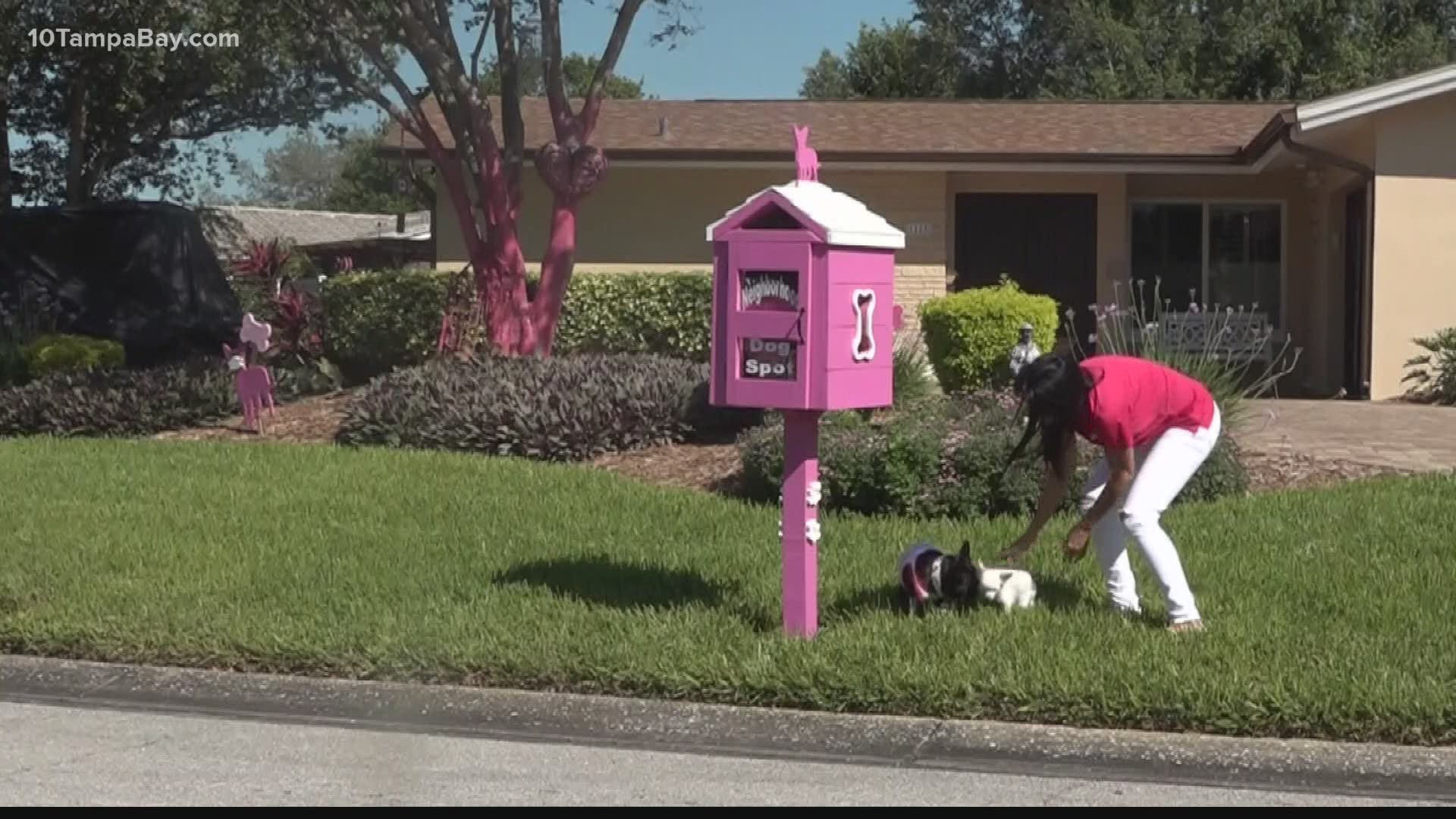ST. PETERSBURG, Fla. — We first found Jaime McKnight and her “neighborhood dog spot” in May after a neighbor reached out to Courtney Robinson on Nextdoor.
The hot pink box was McKnight’s way of spreading a little joy to neighbors while they walked their dogs. She filled it with free dog treats, bags, collars and leashes.
“I mean there’s a ton of dogs in here and it has brought a lot of joy. Now, not so much,” she said.
In July, St. Petersburg Code Enforcement received a complaint from a neighbor about the “ugly pink treat box.” A codes investigator found the neighborhood dog spot was in violation of city code. McKnight received a violation notice.
“Like they say no good deed goes unpunished and it’s really, it’s really silly. I feel like I’m the victim here,” said McKnight.
“I would think that there might possibly be bigger issues at hand in the city to deal with than me and a community box that’s giving out free supplies to my neighbors. I haven’t done anything wrong. I’m not breaking any laws.”
Code enforcement says it’s a violation of city code because even though it’s in her yard, it’s in the "right-of-way," which is a strip of land owned by the city.
According to the violation notice, she needed a permit and without that faced a $500 fine every day it stayed.
“The issue was I didn’t obtain a permit. That’s what they said. And when I followed their directions and contacted the engineering department, they said we don’t give out permits. Okay, so now what am I supposed to do?” asked McKnight.
She turned to 10.
10 Investigates’ Courtney Robinson talked with James Corbett. He’s the Director of Code Enforcement for the city.
Corbett explained the simple solution would be to move it off the right-of-way but admitted that was left out of the violation notice and should have been clear.
“You know, the other thing is that this tiny library, tiny whatever it is, is a fairly new concept and the code, this code was written years ago and didn’t anticipate these types of items this is kind of the code that says you can’t put anything in the right-of-way,” said Corbett.
Corbett said code investigators are not actively looking for community boxes, little lending libraries or free pantries that are in violation, but when they receive a complaint they are obligated to investigate and that’s what happened in McKnight’s case.
“So just generally, we want to keep things out of the right-of-way. There are a lot of utilities that run under the right-of-way. And we want to make sure these items are placed on private property,” he said.
Corbett says signs, including campaign signs or even mailboxes aren’t allowed and although occasionally the city grants permits for something like a mailbox, it’s not common.
The right-of-way footage differs from yard to yard. You can look at the property appraiser’s website to check where the line is.
Corbett says in many cases, one of the easiest ways is to find the water meter and measure about three feet into your yard. The most technical and accurate way to know where your property ends, and the city’s right-of-way begins is to get a survey.
McKnight agreed to take down the box and move it to another spot in her yard. The city closed its investigation and McKnight hopes to have the dog box back up soon for her neighbors to enjoy.

